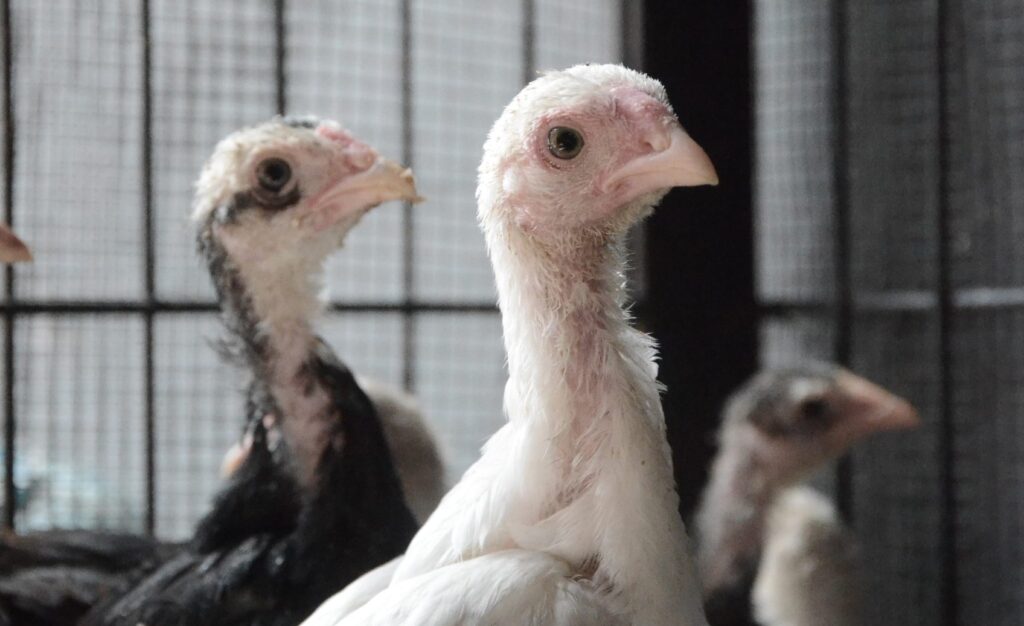
- Annual U.S. total turkey production: 244.8 million birds (USDA, 2018). 46 million of these are slaughtered each year in the United States for Thanksgiving alone. (Farm Sanctuary)
- Industrial turkeys on factory farms are created by artificial insemination. A few days after hatching, turkeys have their upper beaks snipped off. They usually live in a large window-less room with thousands of other turkeys, so typically have less than 3 sq ft of living space.
- In their natural environment, turkeys are social and are omnivores. But in a factory farm, turkeys are fed a diet of corn-based grain feed laced with antibiotics, to inhibit the spread of disease.
- Resistance to antibiotics is now a growing concern among many in the medical field and it is largely due to the 29 million pounds administered to factory-raised animals every year. (CivilEats.com)
- They are bred with hormones to be top heavy, so can barely walk by the time they are slaughtered, and are often killed within their first six months of life. As poultry is exempt from the federal Humane Methods of Slaughter Act, the live birds are shackled upside down on a conveyor belt, paralyzed by electrified water and then dragged over mechanical throat-cutting blades. (latimes.com, “Grim realities behind Americans’ traditional Thanksgiving meal”, 2017)
- Some factory turkey farms collect animal waste in open-air lagoons that can contaminate nearby water supplies. The gallons of water used to produce a pound of turkey at a factory farm equals the same amount of water the average American uses in 100 showers. (localrootsnyc.com)















